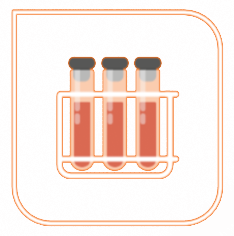Package contents
The PeliClass human IgG subclass Plus kit enables you to measure the amounts of four different types of human IgG antibodies in 50 tests. This includes calibrators and controls. If needed, you can order each component separately as mentioned on the first page of the package insert.
The IgG1 and IgG2 antisera are special liquid sheep sera that specifically react with IgG1 and IgG2 antibodies. The IgG3 and IgG4 latex reagents are suspensions of tiny polystyrene particles coated with specific sheep antibodies that target IgG3 and IgG4 antibodies. The calibrators and controls are liquid human sera.
All components in the kit contain a preservative called NaN3 at a concentration of 0.1% (w/v).
|
Sheep antibodies against human IgG1 |
1x 2.4 mL |
M1891 |
|
Sheep antibodies against human IgG2 |
1x 2.9 mL |
M1892 |
|
Latex enhanced sheep antibodies against human IgG3 |
1x 4.0 mL |
M1893 |
|
Latex enhanced sheep antibodies against human IgG4 |
1x 4.0 mL |
M1894 |
|
Human IgG subclass calibrator set |
7x 1.0 mL |
M1896 |
|
Human IgG subclass control 1 |
1x 1.0 mL |
M1897 |
|
Human IgG subclass control 2 |
1x 1.0 mL | M1898 |
Partners of AntiBodyChain





